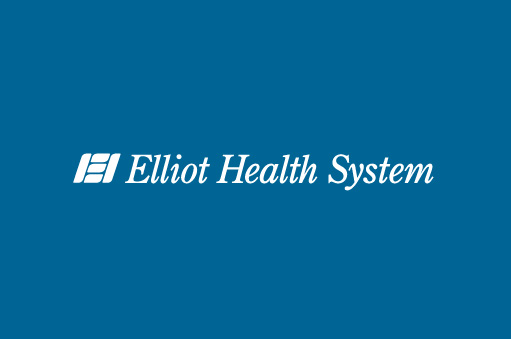Residency Program Requirements for Family Medicine Physicians

A Family Medicine residency program is essential to become an independent Family Medicine practitioner. Residency programs will be a demanding part of your training. In this program you will gain and develop the skills and knowledge that will lead you to be proficient in all levels of care for your patients. You will also gain valuable experience that will allow you to practice independently and unsupervised in your professional career.
Residency program requirements are outlined by the American Board of Family Medicine. The specific eligibility required in order for a physician to enter a Family Medicine residency training program is identified in the residency guidelines. Your educational requirements for MD and DO degrees must be confirmed by the residency program director. If you are an international graduate, you must show that you have a valid Educational Commission for Foreign Medical Graduate certificate before you will be able to be appointed to a residency program. You must also hold an unrestricted medical license to practice in the United States – or completed a Fifth Pathway program at a medical school that is accredited by LCME.
Residency Program Requirements:
As a Family Medicine resident, you must be competent with outcome based proficiency in treating their patients of all ages, who present with undiagnosed and undifferentiated presentations that are commonly managed by Family Medicine physicians. Some of the outcome based residency program requirements:
- Provide preventative care to their patients.
- Be proficient in interpreting basic clinical tests and images.
- Provide initial treatment for emergency medical problems and recognize acute conditions.
- Understand and use pharmacotherapy effectively and appropriately.
- Demonstrate competence managing maternity care within the scope of family medicine guidelines.
- Competently perform surgical, medical and diagnostic procedures that are appropriate for their area of practice.
Resident Experiences:
You will be assigned to a primary family practice site, and will be scheduled to see patients for a minimum of 40 weeks during each year of your program. During this time you will provide primary care to your panel of patients and integrate their care in all settings. Settings include: the family medicine practice site, the patient’s home, long-term and specialty care facilities as well as in-patient facilities. You will need the following to complete your residency:
- At least 200 hours, two months – or 250 patient encounters dedicated to caring for acutely ill or injured adult patients in an emergency department setting.
- At least 100 hours, one month – or 125 patient encounters caring for older patients.
- Patient encounters dedicated to the care of children and adolescents in an ambulatory setting is required. This will be 200 hours, two months – or 250 patient encounters. Including well-child, acute and chronic care. Residents must have at least 40 newborn encounters – including ill, as well as well baby encounters.
- Surgical patients – at least 100 hours or one month, including hospitalized patients, including operating room experience.
- Residents must have two months or 200 hours dedicated to patients with musculoskeletal problems, including sports medicine.
- Women’s health – at least one month, 125 patient encounters or 100 hours of experience with gynecologic issues, well-patient care, family planning and contraception.
- You must have 200 hours or two months that are documented in providing prenatal and post-partum care.
Resident Educational Activities:
Your sponsoring Family Medicine residency program site will provide you with educational resources to allow you to become involved in continued educational activities.
Match-lists:
You are now able to get assistance with creating your match-list by using the Residency Performance summary data which is available online. This will give you the performance data you need to be able to evaluate each specific program by seeing the scores for individual years as well as the national averages.
—
Have you completed your residency? Consider Elliot Health System as your next move!
![]()
EPN/EPS Network Update (5-27-16)
This network update goes over Pediatric Vital Signs, Raymond After hours Changes, and more.
Download the full Network Update PDF by clicking the button below.
Physicians Should Use Social Media – Here’s Why

With nearly two thirds of the adult U.S. population (65 percent) now using some form of social media, healthcare professionals can’t afford to ignore it. Many physicians shy away from it due to HIPAA laws and strict regulations, but this shouldn’t hold you back from promoting yourself and your business.
In a crowded field that’s often criticized for lack of personal connections, sharing a piece of yourself with the digital world can improve yourself and your business exponentially.
Why Physicians Should Use Social Media
- Become an Influencer – Social media is an ideal space to establish thought leadership and expert knowledge. It provides a platform with which to share your thoughts and opinions.
- Build Your Brand – Building up your personal brand, and that of your practice, requires an online presence, and is an important part of your marketing strategy. Most employers, and more often even patients, will use the Internet to vet doctors. They look at patient reviews, published papers, and social media profiles. Without them you’re missing out on an opportunity to stand out among the crowd.
- Stay On Top of Healthcare News – Between data breaches, government policies, and the latest procedures healthcare is constantly in the headlines. Social media keeps you up-to-date on the latest news, trends, and policy changes.
- Networking with Other Physicians – Social media allows for valuable information sharing that you used to only get through papers and conferences. There are many great discussions among physicians on issues of patient care, techniques, and the future of healthcare. By joining in on these conversations, you are benefiting your patients, your practice, and your career.
- Create Stronger Relationships With Patients – Although a slightly more controversial topic, social media is also a great way to connect with patients. Although you should never give specific advice to patients, you can set up support groups for patients with specific ailments, or provide resources to family members caring for loved ones. You can also provide general health and well being tips so patients can take an active responsibility in their own care at home.
Physicians, nurses, and hospitals are also one of the most trusted sources online. Fifty five to 60 percent of people trust physicians’ posts on social media, compared to trusting only 30 to 40 percent of posts from health insurance companies or government organizations.
However, social media use shouldn’t be taken lightly. Whether furthering your personal career, or leading your office in their efforts it’s important to consider your patients’ privacy. The U.S. Department of Health in Human Services offers this worksheet for offices considering launching a social media campaign.
HIPAA Laws You Should Know
Many physicians site HIPAA laws as a reason they avoid social media. But you can have a successful social media presence while still maintaining HIPAA compliance. Remember the following when crafting your social media strategy.
- Write a social media policy and revisit it annually to ensure compliance updates.
- Make sure you eliminate all identifiers including names, location, any kind of dates, etc.
- Consider the “elevator” rule. If you wouldn’t discuss it on an elevator, don’t post about it on social media.
- Thing about separating your personal social profiles and your professional ones.
- Always remember to get detailed written consent from patients before sharing anything about them, including pictures, online.
You should also routinely revisit your strategy to ensure your maintaining the proper security and privacy requirements.
Getting Started
Social media allows you to create better relationships with patients, professionals, and employers. There’s no question that physicians should use social media. Find which platforms they are, and get started.
—
Do you want to connect with Elliot Health System socially? Click the links below!
![]()
Internal Medicine Tools for the Savvy Physician
There are a number of valuable internal medicine tools for physicians that can streamline your business practices while maximizing your productivity and earnings, many of which are ACP (advance care planning) softwares or diagnosis tools for major illnesses. Many of these apps have been rated highly according to GRADE (Grading of Recommendations Assessment, Development, and Evaluation) standards, which determine their overall influence on the outcomes of cases and patient record availability. Listed below are a few of the best internal medicine tools on the market today.
GRADEpro GDT
GRADEpro GDT is a user friendly, universal web-based option for outlining and supplying information that assists you in making diagnoses and formulating treatment plans. It builds compact summary charts for organized reviews and healthcare examinations, in addition to effecting the establishment of medical practice regulations and other files that make public health policy recommendations. This internal medicine tool allows you to easily monitor the entire procedure of developing treatment plans.
It allows you to handle your tasks as a group with the identification and management of possible conflicts of interest, the creation of your project’s scope, the creation and organization of questions or lists that identify outcomes of interest and rates their values, and the preparation of evidence profiles according to the GRADE Evidence to Decision platform. It also backs up all of your computer work on a secure web-based storage server, enabling you to communicate your findings to your team and to work together on the case from anywhere on earth.
Essential Evidence Plus
EE+ is a highly effective and complete medical diagnosis system that works data from 9,000 diagnoses into your own medical workflows. This ingenious physician’s application contains more than 13,000 topics, regulations, abstracts, tools, pictures, and diagnoses that cover the most prevalent ailments, diseases, and surgical procedures that physicians encounter on a daily basis.
All recommendations carry an evidence rating that appropriately grades their value based on all evidence found in any pertinent records. On top of that, EE+ is closely connected to Cochrane Systematic Review abstracts, in addition to the complete text of these reviews with a Cochrane Library membership, which ensures that you have permanent access to the best quality evidence-supported medical information in existence.
ACP Practice Advisor
ACP Practice Advisor is a series of modules that addresses certain aspects of medical practice, including providing patient background information. The Practice Biopsy is a self-assessment tool which sets up a baseline score in assessing all ACP Practice Advisor users. Your staff members may work on the Practice Biopsies independently or in small clusters, at any time and in any sequence. The tool creates a case study for each practice as it finishes the ACP Practice Biopsy and effects adjustments based on the provided resources.
It has record-keeping features to help monitor the progress of each project as time passes, recognizing possibilities for improvement by comparing your clinic to others. Its virtual resource library integrates books, articles, videos, tutorials, easy-to-download guides, policy templates, and an assortment of apps from every module into a browsable compendium.
Other Internal Medicine Tools
Aside from the above-listed resources, there are a number of additional internal medicine tools and apps that simplify the complex process of diagnosing and treating patients. A few of these popular and efficacious internal medicine tools are the RPA Advance Planning Tool, the ACP Decisions app, the palliAGED Decision Assist tool, INTERACT tools and templates, and the Consumer Toolkit for Healthcare Advance Planning offered by the American Bar Association.
—
![]()
EPN/EPS Network Update (5-20-16)
This network update goes over the New Hampshire Therapeutic Cannabis Program, Available Pearl Manor Fund Grants and more.
Download the full Network Update PDF by clicking the button below.
Ace Your Exam! Physician Assistant Certification Requirements

After spending countless hours in the classroom, medical facility or hospital, you are finally prepared to obtain your national certification as a Physician Assistant. All the hard work and time away from loved ones has finally paid off. You are nearly ready to join your PA peers!
Physician Assistant certification requires a new graduate to take the Physician Assistant National Certifying Examination (PANCE). This 300 question, multiple choice exam is taken in five blocks of 60 questions, taken 60 minutes at a time. These questions will test you on basic and surgical knowledge across various medical areas including the organ system and clinical tasks.
There are several requirements to the exam in order to qualify to participate in this certification process. There are time and educational requirements and of course necessary paperwork to complete this process. The preliminary step is to ensure that you have completed a qualifying educational program. So long as you have graduated from a program accredited by ARC-PA prior to July 1994, you are allowed to sit for this exam. Regardless of where you may have earned your medical degree, the program must be accredited by ARC-PA. If it was prior to the 1994 time period there is different eligibility criteria for your educational program based on historical accreditation programs. Additionally, if you are taking this exam no more than six years after completing your medical program, then you are eligible to participate.
Registration requires further steps and there are time constraints to be mindful of. An application for the Physician Assistant certification exam along with a $475 fee must be sent in advance. The fee along with your application must be sent no more than 180 days after your graduation and the submission of all the requested paperwork. This time frame will be provided to you in writing after submission of the materials in an e-mail of acknowledgement of receipt of your application. Another items to be mindful of is that you are only able to take the test once every 90 days and not less than than 7 days after completion of your school program. The exam is scheduled at a location of your choice and there are sites all over the United States with Pearson VUE testing centers.
Things to consider in order to ace your exam:
- Use the available resources for study materials, it is integral that you utilize these to study, review and prepare over time.
- Take practice exams that require you to test oneself using the same method as the examiners will require.
- You have breaks allotted to you during the exam after each block of 60 questions. Use these to eat, drink and refresh. Be careful though, the breaks last only 45 minutes.
- Get to the site early, better to be prepared! Plus if you arrive late you are not permitted to take your exam at all.
Have hope, according to the NCCPA, in 2015 96% were successful in passing the physician assistant certification exam the first try!
—
Did you just pass your PANCE? Consider a career with Elliot Health System!
![]()
5 Beautiful Hospital Locations

Many hospitals are located in pleasant surroundings in or near resort areas throughout the United States. These locations can be in the desert, mountains, by lakes or the sea. The medical centers offer excellent facilities for physicians and medical staff who want to live in beautiful hospital locations with opportunities to enjoy outdoor recreational activities.
- Palm Springs, California
This hospital is located in the beautiful Coachella Valley where the desert meets the mountains. Palm Springs and neighboring communities of Rancho Mirage, Indian Wells, Palm Desert and La Quinta offer golf courses, tennis courts, swimming pools, great shopping and dining are all close by. The weather is warm, dry and clear.
The famous Dwight Eisenhower Medical Center is located in Rancho Mirage in the heart of the Palm Springs area on 80 acres of land donated by Bob and Dolores Hope in 1966. Although the not-for-profit hospital was was named for our 34th President, its patients include an impressive list of entertainment personalities. The Betty Ford Center is adjacent to the hospital. In addition, the medical center has three urgent care facilities located around Palm Springs, La Quinta and Rancho Mirage.
- Vail, Colorado
Skiing and snowboarding are great winter sports options at nearby Vail, Breckenridge and Copper Mountain. Mountain biking, camping, hiking and fishing are off-season activities that are offered high in the Rockies. The views are stunning and the air is crisp and cool at this 8,000 foot elevation.
Vail Valley Medical Center is in one of several beautiful hospital locations in Colorado’s resort areas. The Vail Valley Medical Center specializes in the fields of orthopedics and sports medicine, pulmonary and cardiac care. The Shaw Cancer Center is also part of the facility.
- Lake of the Ozarks
Lake of the Ozarks has something for everyone all year round. You will probably like this area if you enjoy golf, fishing, boating and other water sports. The shoreline features marinas, elegant mansions, family homes, weekend cabins and campgrounds.
Lake Regional Medical Center in Osage Beach, Missouri is another of several beautiful hospital locations. This facility offers a hospital, clinic and emergency care services.
- Fort Lauderdale, Florida
Fort Lauderdale is a popular vacation destination about 25 miles north of Miami with warm Atlantic beaches and canals on the Intracoastal Waterway. Boating, fishing, swimming, tennis and enjoying the sun are full-time activities. You will find incredible dining and shopping along with the Port Everglades cruise ship terminal easily at this location.
The Broward Health Medical Center and Chris Everett Children’s Hospital is located in Fort Lauderdale with facilities in other areas of Broward County. Tennis star Chris Everett has raised millions of dollar for the children’s hospital, a leading regional pediatric care center.
- Manchester, New Hampshire
Manchester is located in a scenic area with fishing, boating, hiking, skiing and snowboarding all within a short distance from town. The Pat’s Peak Ski Area is nearby with a snow sports school for children and adults. New Hampshire is a land of mountains and lakes and a seashore that appeals to sports people year-round.
Elliot Hospital in Manchester is a major medical center in the area with emergency care and clinics. This hospital includes a trauma center and rehabilitation facilities. The Elliot Health System is the largest provider of health care services in Southern New Hampshire.
These are just five of many beautiful hospital locations throughout the country. Physicians and other qualified medical personnel should definitely try to explore job opportunities at regional medical facilities that offer pleasant surroundings.
—
Want to learn more about opportunities with Elliot Health System?
![]()
EPN/EPS Network Update (5-13-16)
This network update goes over a welcome to our new employees, Elliot Gala Sponsorships, a coding update and more.
Download the full Network Update PDF by clicking the button below.
5 Physician Forums You Should Participate In

Most people expect that health care providers enjoy using social media for personal purposes. Fewer people realize that over two thirds of doctors use professional social networking sites. Here are five physician forums that you should participate in.
SERMO
SERMO is a community dedicated to creating a safe space for physicians. SERMO screens applicants and only approves practicing doctors. While members are able to choose to use their names, most prefer to use an anonymous screen name.
One of SERMO’s unique features is a crowdsourcing platform called SERMOsolves. Doctors are able to collaborate to find answers to complex problems. Many of their members use this feature from the bedside to find quick resolution.
MoMMD
Over time, more and more women have entered the field of medicine. Female doctors are as capable as male, but may face challenges unique to women. MomMD is an online community for female doctors, residents, and students. Their forum lets women give each other support through these challenges.
Doximity
Doximity is another popular medical social media site. With a membership of 60% of U.S. doctors, networking with other doctors is simple. Members work together to identify and treat complex medical conditions. The physician forums are not limited to medical collaboration. Doctors discuss the business end of running medical practices. They are also used to find and fill available medical positions.
As well as physician forums, members have access to a library of articles for your field of practice. These articles are often available before the official publication date. Additionally, reading these can earn CME credits. Doximity will track your CME credits for you.
The Physician Executives Forum
Later in their careers, many doctors find themselves in managerial positions. Running a business requires responsibilities that medical school did not prepare them for. These unique needs are why The Physician Executives Forum was created.
When facing this type of transition, networking with other doctors is critical. The Forum gives physicians the opportunity to discuss what they are learning. Subjects often covered include leadership skills, balancing medical and administrative needs or communication between interdisciplinary members of your team. Additionally, The Forum provides education in practical managerial skills and necessary resources.
The PANDAS Physicians Network
Specialized physician forums give doctors access to unfamiliar information. One example is The PANDAS Physicians Network (“PPN”). PPN is an organization that exists to help doctors to understand PANDAS and PANS.
Doctors use the forums to discuss how to use cutting edge research and remedies. PPN collects data about the patients for future studies. Additionally, PPN is the hub for active fundraising for this medically complex syndrome.
—
Doctors devote years of their lives to education. After graduation, they spend decades caring for their patients. Physicians are always striving to provide a better quality of life. These physician forums can make yesterday’s dreams a reality for your patients today.
Are you interested in sharing these physician forums with others? Check out our free Physicians Physician Forum Guide by clicking below.
![]()
HIPAA and Social Media – The Basics of Being Social and Ethical

Social media is everywhere. Facebook, Twitter, Instagram, Snapchat and blogging, chat rooms and discussion forums, not to mention the comment sections on numerous websites, have irreversibly changed the world of communication. Social media platforms have greatly expanded our ability to share information and exchange ideas while providing a global platform for bringing people together.
The ubiquity of social media has not, however, been free from some significant problems, many of which are related to privacy rights, ethical issues, or both. Health care is one area where these complications abound, where privacy and confidentiality are constantly subject to unlawful (as regulated by federal and state law) and/or unethical disclosure. As a result, much has been said and written about legal issues as they relate to The Health Insurance Portability and Accountability Actand (HIPAA) and social media. The basics of being ethical when dealing with HIPAA and social media, however, have not been examined to nearly the same extent.
Resources such as npr.org and pbs.org provide general information regarding ethical factors that impact the use of social media. They do not, however, address the considerations unique to health care providers, facilities and insurers.
HIPAA and state privacy laws alike provide some direction and guidelines to parties who have access to confidential and/or private patient information and the means by which to disseminate that information. Of course, regardless of how well the applicable legislation may have been drafted, no law can contemplate all the possible circumstances that may arise when dealing with information regarding the identity, diagnosis, treatment or prognosis of a medical patient. Situations often arise that require an ethical rather than legal assessment.
Given the potential liability (both civil and, in some cases, criminal) for unauthorized release of the confidential and/or private medical information of a patient, HIPAA and social media considerations should always err on the safe side. In other words, think of HIPAA as the minimum standard of what you can or can’t do.
Say, for example, that you believe the Act permits the action you’re contemplating taking but you’re not entirely sure. Or perhaps the Act appears silent on your set of circumstances. What to do?
First and foremost, you need to evaluate the information to determine whether it could, with any effort, enable the reader to identify the patient and/or patient’s family. Successful integration of HIPAA and social media requires that any disclosure related to a patient may not contain sufficient information that would enable a reader who has no need to know be able to recognize the patient either directly or indirectly.
For example, providing enough information that someone could pinpoint a specific hospital ward or family and, with a little investigation or extrapolation or correctly “guess” who the patient is might be would considered a violation of applicable law or a breach of ethics.
So what if you really aren’t sure? Is there any guiding principle that would keep you from running afoul of any ethical considerations in the context of HIPAA and social media? Perhaps.
Remember that the primary responsibility of any health care provider is “to do no harm.” Ask yourself, then, whether posting a heartwarming tale about a patient on Facebook (even if you don’t include the name), an Instagram photo of a glorious floral arrangement delivered to a hospital room, or sharing a short video story on Snapchat could possibly let others know who your social media post is about. If so, then potential harm exists and you should probably not send it.
If you have any question about HIPAA and social media as it relates to sharing information about someone in your care, the answer is fairly simple: When in doubt, don’t.
–
Elliot Health System uses social media regularly. Make sure to like us on Facebook and follow us on Twitter.
![]()















Recent Comments